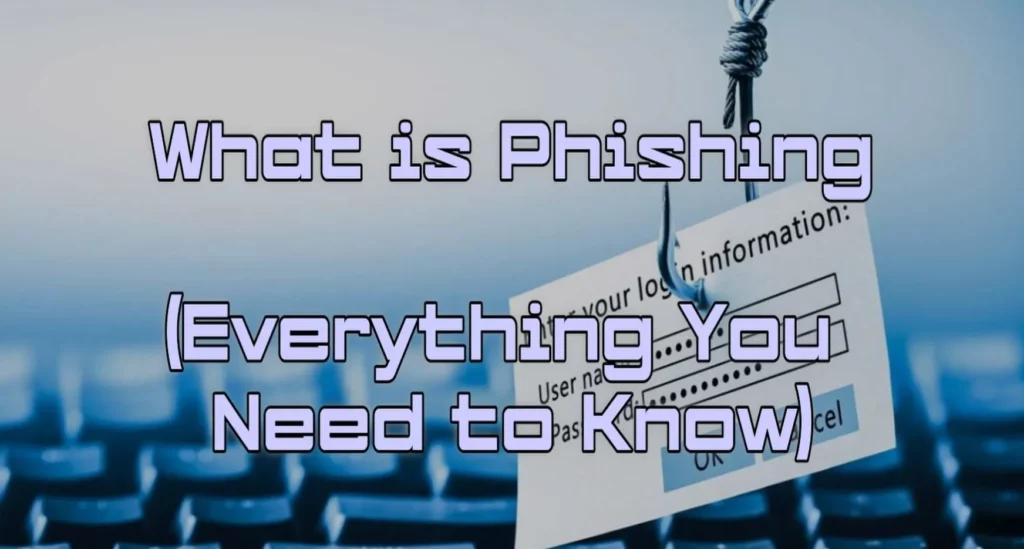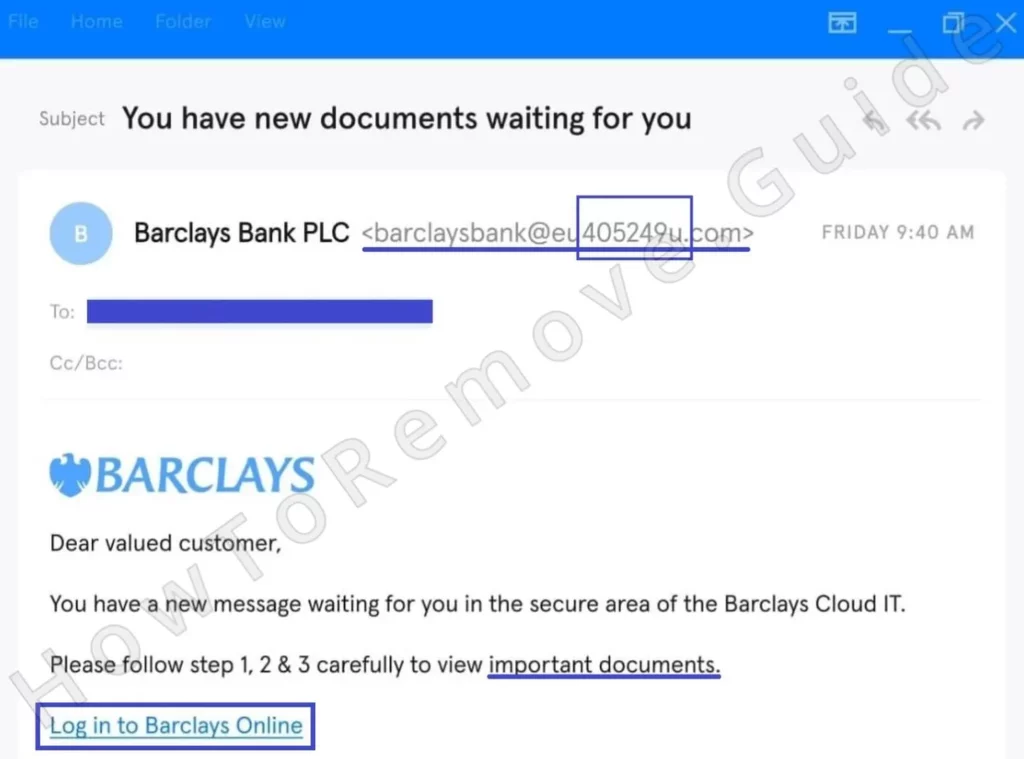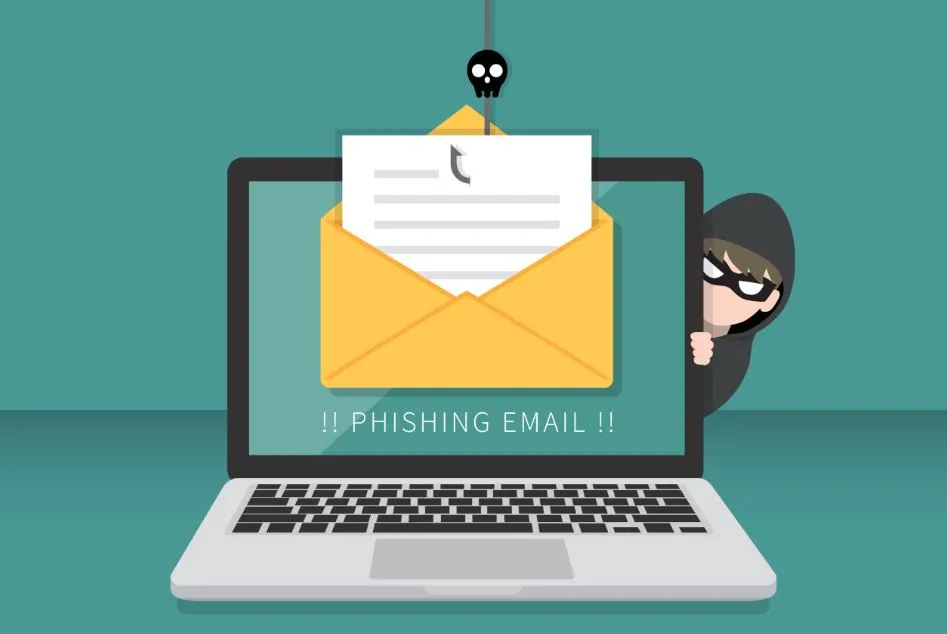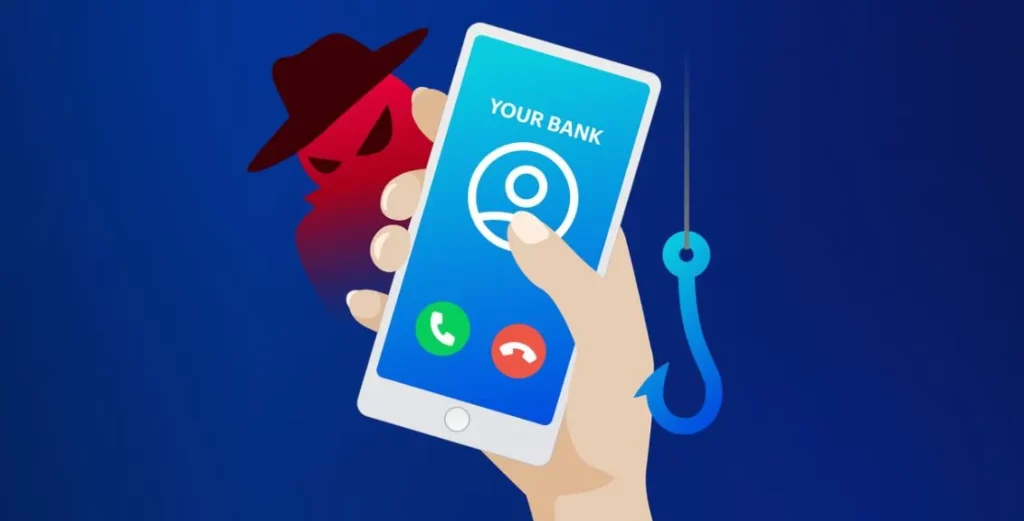You’ve probably heard about phishing and have some basic idea of what it is – a type of online scam designed to trick you into sharing some sensitive info or downloading malware on your device. However, such knowledge is severely insufficient when it comes to recognizing and avoiding phishing scams.
The people behind such scams often get very created with the specific methods they employ and even experienced users often get fooled into falling for them. At the same time, having the right info and knowledge is the best way to protect against phishing attempts.
This is exactly why I’ve prepared this next article, where I’ll tell you everything you must know about phishing. After you read the following info, the chances of you becoming a phishing victim will be greatly reduced.

What is Phishing?
At its core, phishing is an attempt to steal sensitive information from the user or to trick them into downloading malware.
The info that the scammers are going after is usernames, passwords, bank account details, or credit/debit card numbers – details that can lead to financial gain for the cybercriminal.
The core of the scam is that the attackers impersonate a trusted entity – a bank, a popular service provider, or even a colleague. They send you an online message (most commonly an email) which is how they fool you into providing these details or clicking on some harmful link included in the message.

The stolen data is then used to commit further crimes, such as identity theft or financial fraud, or it’s sold on the dark web for others to exploit.
Phishing, as a scam model, has been around for over 30 years, yet it still remains a prevalent threat for one simple reason. Rather than relying on system or software vulnerabilities, it preys on the one thing we are still failing to update – human psychology.
The scammers invoke a sense of urgency, fear, or curiosity, which is how they push victims to act quickly and irrationally. And once you get hooked, it only takes one wrong click or piece of information handed over for the scam to come into full effect.
Types of Phishing Attacks
Phishing scams come in many forms and the attackers always aim to refine their techniques, so you must always update your knowledge and keep yourself informed. The only reliable way to spot potential attacks before they cause harm is to know how they work.
Scam Email Phishing Attacks
This is the classic type of phishing scam. It has been around for decades and is still the most common form of phishing. The attacker registers fake domain names that closely resemble legitimate organizations.
Common Tactics:
- Spoofed Email Addresses: Attackers create email addresses that closely resemble those of legitimate organizations.
- Urgent Language: Messages may warn of account suspensions or unauthorized transactions to provoke immediate action.
- Malicious Links or Attachments: Clicking these can lead to malware installation or data theft.
An example of a scam email phishing attack can be when a scammer uses “my-bank.com” or creates subdomains like “mybank.support.com” to mimic a legitimate entity with an email address “mybank.com”.
A technique called email spoofing is also commonly used to further disguise the sender’s email address. A spoofed email’s header can look identical to that of a legitimate organization, which makes it significantly more difficult to spot the scam.

The attacker then sends mass emails from these domains to thousands or even millions of users. The messages sent are designed to create urgency – a security warning, a verification request, or a prize claim.
The end goal of these emails varies. They often contain malicious links that direct you to fake webpages that also mimic the sites of legitimate organizations and services. The goal here is to get you to enter your login credentials or credit/debit card numbers so the scammers can steal them.
It’s also possible that the email asks you to download a particular file or app (this is often done when the scammers impersonate an organization’s customer support). They ask you to launch the app on your device under the pretense that it will let them solve an issue on your device. Of course, that app is almost certainly a RAT (Remote Access Trojan) or something similar, and if you run it, the scammer/hacker will gain remote control over your device.
Other possibilities also exist, but the core of this scam stays the same – the attackers send you a message from a fake/spoofed email address and ask you to perform some kind of action (click a link, share personal data, download an app, etc.).
Spear Phishing Attacks
While regular email phishing casts a wide net, spear phishing is more targeted. Here, the attackers customize their emails for specific individuals.
Characteristics:
- Personalized Content: Emails may reference colleagues, projects, or other insider information.
- Trust Exploitation: By seeming familiar, attackers lower the victim’s guard.
- Direct Requests: May ask for sensitive data or prompt the recipient to click on a link or download a file.

Spear phishing attackers will often first research the targeted victims and then use personal details such as their names, job roles, or workplace to make the attack more convincing.
These details are usually obtained by combing through social media profiles. Sometimes, personal info is also acquired from data leaks on various sites.
Such tailored attacks significantly increase the chances that the victim will fall for the scam. Again, in most such cases, the end-goal of the scam involves financial fraud or data theft.
Whaling Attacks
Whaling attacks are basically spear phishing VIPs. The targets here are often high-ranking individuals within large organizations – CEOs, CFOs, COOs, etc.
These attacks are more subtle and sophisticated than regular phishing. The attackers will often carry out extensive research about the executive’s public life or business dealings prior to initiating the scam. This allows the scammer to craft highly personalized and believable messages.
The end-goal of this type of phishing attacks can be to manipulate the executive into disclosing sensitive information or making high-stakes decisions, such as wiring large sums of money.
Smishing and Vishing Attacks
The majority of phishing attacks happen through email, but not all of them. Smishing is phishing done through SMS messages and vishing is when a voice call is used to trick the victim.
Common Scenarios:
- Verification Requests: Urgent appeals to confirm personal details.
- Account Issues: Messages or calls about suspicious activity on an account.
- Prizes or Offers: Notifications about winning a contest or receiving a special deal.
Vishing (Voice Phishing) scams, in particular, are interesting. In them, the attacker could pretend to be a representative from a bank or another reputable organization.
They’ll inform that they need to verify their account because it has been compromised or for some other reason.
The attacker then asks the victim to provide sensitive information – credit/debit card details or personal identification numbers (PINs).

With vishing scams, the psychological factor plays a huge role. When people are asked to do something in person or over the phone (as opposed to when a text message is used), they are generally more inclined to cooperate, even when they sense something might be off.
That is why you must be especially careful with calls from unknown numbers. Always tell them that you’ll call them later and hang up the phone, instead of acting in the moment.
This is to give yourself time to think through the situation and scrutinize the exchange with a clear head. More often than not, it’s going to become very clear to you that it was a blatant scam, especially if you were asked to provide any sort of sensitive info.
There are also automated vishing attacks that use pre-recorded, which lets the scammers target a much bigger number of users, but these are typically very easy to spot.
Angler Phishing Attacks
The so-called angler phishing attacks are a relatively new type of threat that’s directly linked to the influence that social media platforms have on people’s lives.
Angler phishing Attackers create fake social media accounts that mimic those of well-known brands or organizations.
Some of the customers of those brands/organizations who mistakenly come across the fake account will reach out for support or to voice complaints. The attacker then responds to these customers, pretending to offer help, and directs them to malicious links or asks for sensitive information.
The rest of the scheme works just like any other form of phishing and the result is either some form of financial fraud, malware attack, or identity theft.
How to Recognize Phishing Attempts
The majority of phishing attempts share certain common traits that makes them easy to recognize and avoid as long as you know what you are looking for. Here are the main red flags that can help you identify a phishing scam:
- Pressure to act quickly.
- You are asked to provide sensitive personal data or download a file or an app.
- Most of the information provided in the email is kept vague.
- You aren’t provided with concrete details as to what causes the need for you to provide the required details or to perform the required action.
- Spelling errors and bad grammar in the contents of the message.
- Hovering over a provided link shows a different or a suspicious URL in the bottom-right of your browser.
- The sender’s email address isn’t on the list of official emails provided in the contact form of the impersonated company/organization.
- The sender impersonates a company/organization you’ve never interacted with previously.
Note that a phishing scam doesn’t need to include all of these red flags. If even a single one of the mentioned warning signs is present in an email you’ve received, it’s highly likely that you are being targeted by phishing scammers.
Cyber Attacks and Phishing
Phishing attacks are often just the first step in a much larger cyberattack chain. As I noted at the start, one of the main goals of phishing is to lure victims into clicking on malicious links or downloading harmful attachments.
If the victim falls for the lie and downloads something rogue on their device, then opens the door for a variety of more serious threats that I’ll briefly explain next.
Malware and Ransomware
Malware, including the ransomware sub-category, is frequently spread through phishing messages. If the victim clicks on the malicious link or downloads the message attachment, the malware gets installed on their device, which starts the main stage of the attack.
In the case of ransomware, the malicious program encrypts the victim’s data which makes it nigh impossible to open without a special key. The attacker then demands a ransom to restore access by sending the victim said key.
This tactic, which has been around for over a decade now, has been devastating for both businesses and individuals. Ransomware accounts for billions of dollars in damage each year, and it’s one of the most difficult forms of malware to deal with.
Man-in-the-Middle (MITM) Attacks
Phishing is also used to initiate Man-in-the-Middle (MITM) attacks. An MITM attack is when the cybercriminal intercepts the communication between the victim and a legitimate service (such as a banking website).
Phishing emails lure victims into entering their login credentials on fake websites hosted by the attacker. The criminal then uses the collected credentials to pose as the victim in front of the actual organization/service. This allows the attacker to further access sensitive information or manipulate transactions without the user’s knowledge.
SQL Injections and Zero-Day Exploits
Phishing emails may lead to SQL injections or Zero-Day exploits when used for more sophisticated attacks.
SQL injections let the attacker exploit vulnerabilities in websites or web applications. This provides access to databases where sensitive information is stored.
Zero-Day exploits take advantage of still undiscovered software vulnerabilities. When aiming to exploit a Zero-Day vuln, the hackers use phishing tactics to gain initial access to a system. This lets them deploy the malware which will be used to exploit the unknown vulnerability in the attacked system before it is discovered and patched.
DNS Tunneling
Phishing can sometimes also lead to DNS tunneling. This method exploits the Domain Name System (DNS) to create a covert communication channel between the network of the victim and the attacker’s server.
Phishing tactics are again used to grant the hacker initial access, after which they can send commands or exfiltrate data without being detected by standard security protocols.
Conclusion: Phishing is a Gateway to More Dangerous Cyber Attacks
Phishing is, in itself, a simple scam. A fake message sent to a large number of users, some of whom are guaranteed to fall for the ruse. However, this is often only the starting point for much more elaborate cyberattacks.
Phishing scams trick victims into giving up their credentials or downloading malware, and this opens the door to threats like ransomware, MITM attacks, and SQL injections.
And here’s the kicker – no matter how strong your antivirus is or how many auxiliary anti-malware apps you have, you can still fall victim to a phishing attack. This is because these attacks rely on your own ability (or rather lack thereof) to discern a fake, misleading message.
This is why it’s critical to understand how phishing works and be familiar with the various forms it takes – email phishing, spear phishing, whaling, smishing, and more.

Leave a Reply